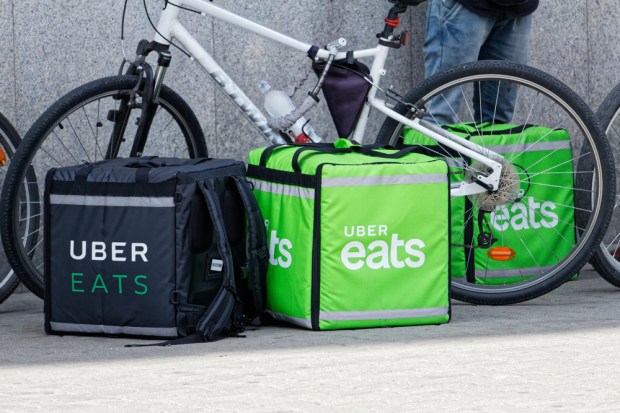
With leading restaurant aggregators offering roughly interchangeable services, Uber Eats is expanding its capabilities with the addition of Multi-Store Ordering to stand out to consumers.
The company announced Wednesday (Oct. 11) the launch of the feature, enabling consumers to add items from other restaurants or from convenience stores or liquor retailers to their orders without being charged another delivery fee. After selecting their order but before checking out, consumers are presented the option to “bundle” their selection with items from other merchants.
“This builds upon earlier testing of ways to add items to an order — and brings a major expansion in the stores and restaurants available for bundling,” Uber stated in the announcement.
The move comes as aggregators look to drive adoption both of the channel overall and of their own marketplaces in the face of stiff competition, seeking ways to meet more of consumers’ day-to-day needs to both win their loyalty and drive frequency.
As it is, most consumers do not order from aggregators regularly. PYMNTS Intelligence’s Connected Dining series, which draws from surveys of thousands of U.S. consumers, found that as of June, a minority of respondents (40%) reported having used an aggregator to place an order at least once in the previous six months. Additionally, the results revealed that only about 1 in 20 restaurant orders are via aggregator.
Among these aggregator customers, 49% reported that they made purchases from Uber Eats, making this platform consumers’ No. 2 choice, behind category leader DoorDash, which 77% had used, and ahead of Grubhub, on which 35% had placed orders.
Uber Eats is not the first aggregator to add multi-merchant ordering options — DoorDash introduced its DoubleDash option in 2021, though this capability is more limited than Uber Eats’ new offering. DoubleDash, for its part, offers consumers the option to tack on additional items such as beverages and desserts from other sellers to their restaurant order after they have already checked out.
“Products like DoubleDash, where you can add a delivery after you check out from a restaurant and bundle them into the order, (consumers) are effectively paying one fee for multiple deliveries,” DoorDash CEO Tony Xu said last year. “That has really driven a lot of adoption of these other categories such as alcohol, pharmacy products or even a couple things from the grocery store.”
Overall, restaurant aggregators are racing to expand their offerings, to provide consumers with the widest range of convenience-oriented offerings in an effort to win their loyalty away from competitors. Leading players are adding more grocery stores and convenience retailers to their platforms, expanding their alcohol delivery capabilities and more.
Indeed, consumers are seeking this breadth of options, looking to get more of their on-demand needs met from unified digital platforms. PYMNTS Intelligence’s study “Consumer Interest in an Everyday App,” created in collaboration with PayPal, which drew from a survey of more than 3,300 consumers in the United States and Australia, revealed that 65% of Americans and 71% of Australians would like to consolidate their mobile restaurant ordering into an everyday app.